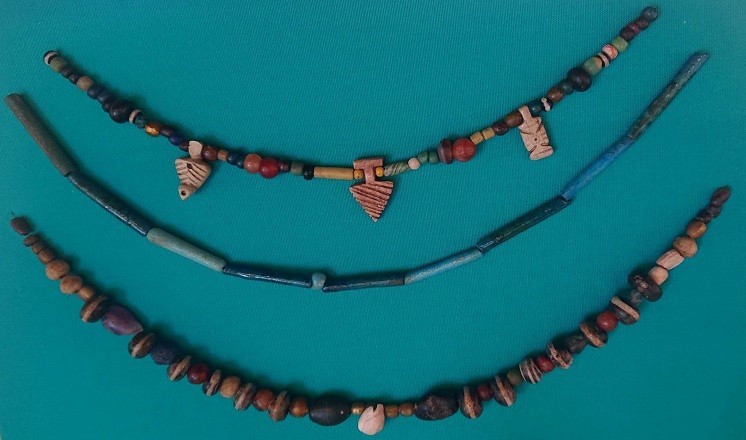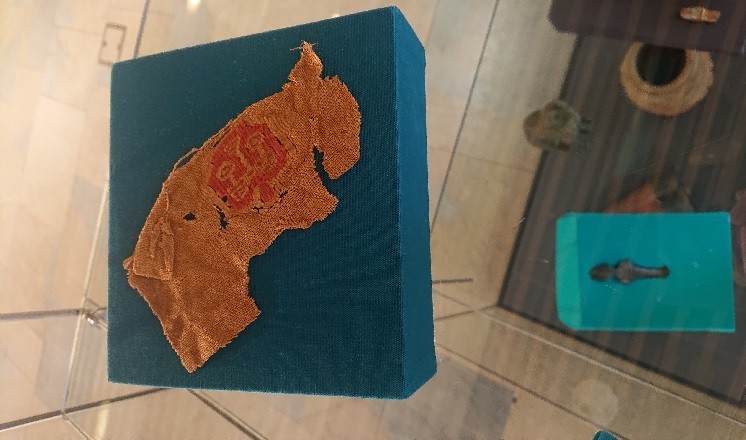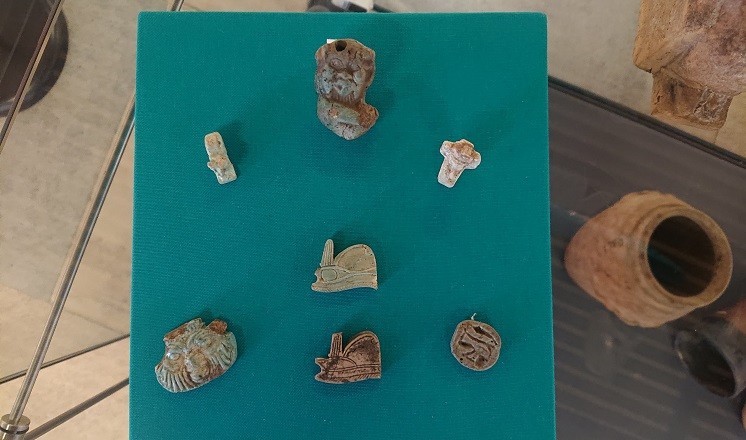Spotlight On ... Ancient Egypt
RSS FeedAncient Egypt has long been a source of fascination for people around the world, and here in Lincolnshire it's certainly no different! In this, the third of our spotlight display blogs, we discuss some of our amazing artefacts from our Egyptology collections and how they came to be in our collections.
The term 'Ancient Egypt' covers a long period of time, which began in around 3100 BC when the area was unified under the first Pharaoh, marking the start of the 'Dynastic Period'. This was the age of pyramids and mummies, which spanned over 2 millennia. In the 4th century BC the arrival of the Greeks and Romans spelled the end of the 'Dynastic Period', and 'Ancient Egypt' as we know it.
Historically, in Egyptology, the study of Ancient Egypt, there has been a significant focus on death and its associated practices. This is because most of the evidence for what we know about Ancient Egypt comes from tombs and burial sites. However, there are some objects that show us that the Ancient Egyptians led rich, creative and interesting lives too.
Some of the objects that feature in the display give us an insight into life during the Ancient Egyptian period; from bone hair pins, to a slate make-up palette and jewellery made of shells and glass beads. There are also some decorative alabaster vases, and a range of Egyptian pots. One of the standout artefacts is a rare example of Egyptian textile – a piece of Coptic weaving that dates from around AD 400. This was donated to the City & County Museum in 1947, and the curators at that time corresponded with the Metropolitan Museum of New York about the sample.
The display also showcases a selection of items that are associated with Egyptian belief systems. The Ancient Egyptians were polytheistic people, meaning they worshipped many different gods and goddesses. On display is a ceramic statuette of the goddess Isis and her son Horus – Isis was considered a mother goddess and protectoress, while Horus was the falcon-headed god of kingship. It was common practice for the Ancient Egyptians to wear amulets, like the ones on display, to protect and bestow power upon themselves from the gods. One example on display is a ram amulet, representative of the gods Khnum or Amun, and a symbol of virility and fertility. There are also examples of amulets depicting the recognisable wedjat eye, which represents the healed eye of the god Horus. It depicts a combination of a human and a falcon eye and embodies healing power and symbolises rebirth. The Ancient Egyptians also strongly believed in the idea of an afterlife and these amulets were often found in the wrappings of mummies, as protection for the deceased. Also often found in tombs were small statues called shabtis representing servants for the deceased.
In total we have around 500 objects that were discovered in Egypt in our collection, the vast majority of these were acquired in the early 20th century. Most were donated between 1915 and 1925. Almost all the material acquired in 1915 comes from a range of individual collectors and we don't know a great deal about where this material was from, besides that it was ‘found in Egypt’. Donors include Captain Arthur Trollope, Captain Leslie Melville, and J.G. Dale ‘of Cairo’. In contrast, however, much of the material acquired in 1925 came from the British School of Archaeology in Egypt (BSAE).
The school was established in 1905 to support the work of British Archaeologists in Egypt, initiated by leading archaeologist Flinders Petrie (1853-1942). Petrie was the grandson of Lincolnshire-born Captain Matthew Flinders (1774-1814) who was a navigator and cartographer credited with being the first person to utilise the name Australia to describe the entirety of that landmass, after leading its first inshore circumnavigation. The objectives of the BSAE were:
1. To conduct excavations and pay all expenses incidental thereto.
2. To discover and acquire antiquities and to distribute the same to public museums.
3. To publish works.
4. To hold exhibitions.
5. To promote the training and assistance of students.
Material held in our collections comes from excavations carried out by the BSAE at Abydos (1900), Badari (1925), Ballas (1925), Ben-Hasan (1904), Denderah (1897-98), Edfu (1905), Harageh (1913-14), Hu near Dendereh (1899), and Naqada (1895). The BSAE finds distribution procedures followed the same principles as the Egyptian Exploration Fund (EEF): “Antiquities not claimed by the Egyptian Government shall be divided entirely among public museums, excepting large numbers of similar objects which may be given to the subscribers. In distribution to Museums the total of contributions from any place or district shall be taken into account, after deducting from those amounts one guinea for each volume of publication given on account of those contributions” (BSAE Regulations, 1905). The material in our collections came from the BSAE in three stages; the first, two strings of beads, was presented by Petrie in 1915. The second part of the collection was acquired by the BSAE subscription services, and the final part, comprising a range of ceramics, was acquired from the Chadwick Museum in 1925. The BSAE formally ended in 1954.
The display is open in The Collection's Courtyard Gallery until Thursday 5th November 2020. To pre-book your free entry ticket please click here.
Comments
There aren’t any comments for this blog yet



